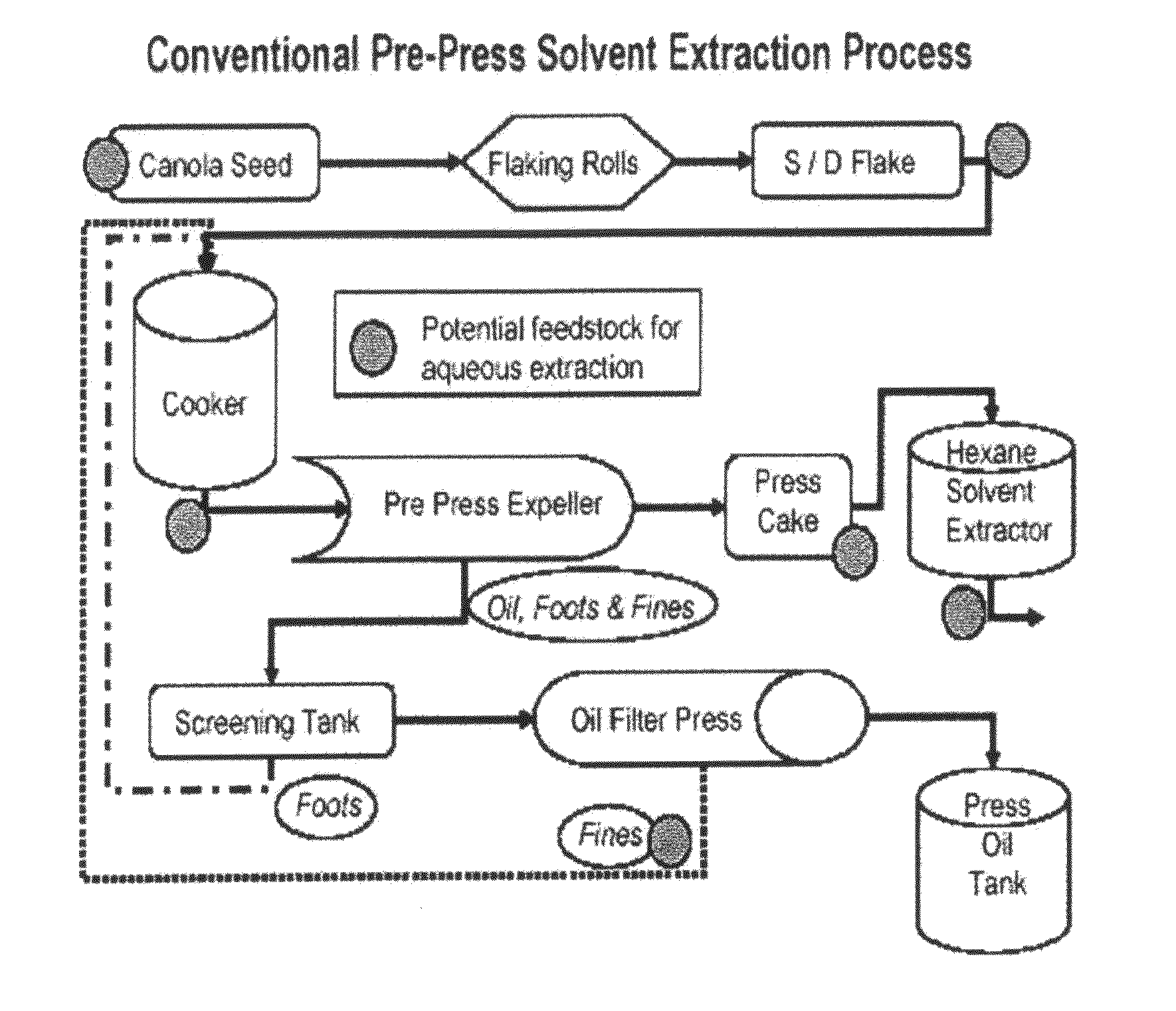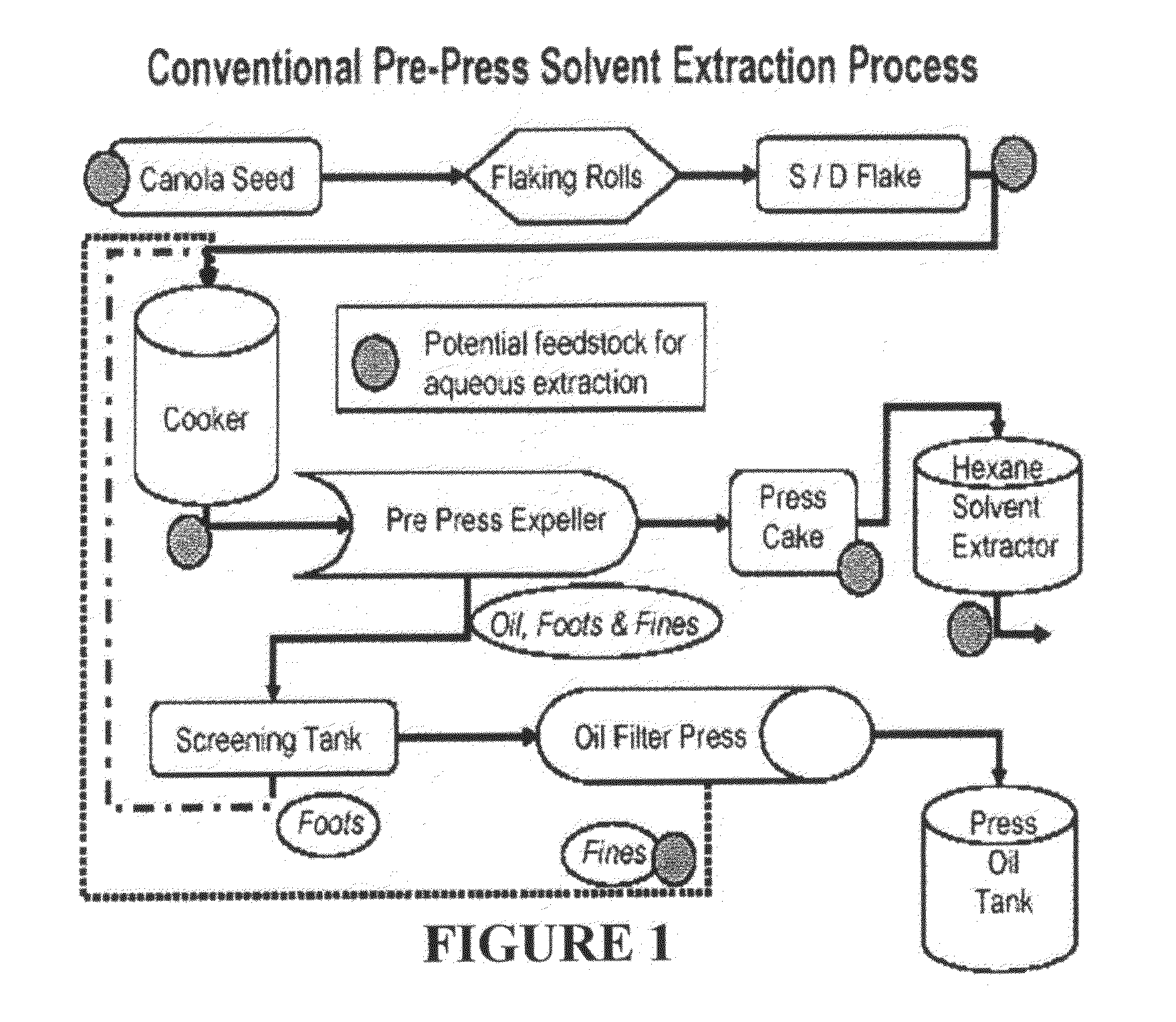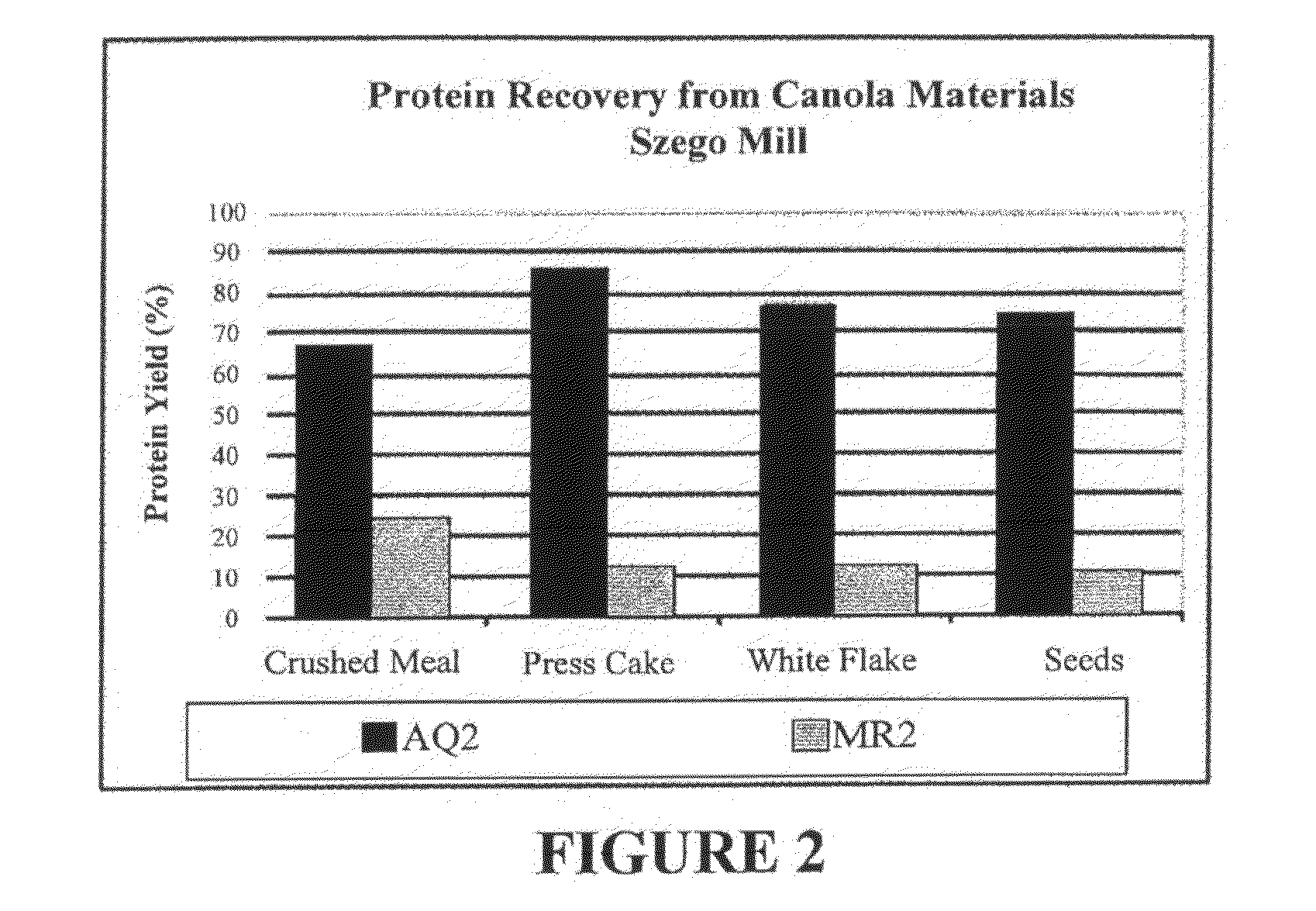Aqueous processing of oilseed press cake
a technology of oil-press cake and oil-pressing press, which is applied in the field of oil-press cake aqueous processing, can solve the problems of low value of meal from conventional canola crushing and solvent extraction, low value of canola oil processing economics, and low value of canola oil processing, so as to achieve significant particle size reduction and higher protein levels
- Summary
- Abstract
- Description
- Claims
- Application Information
AI Technical Summary
Benefits of technology
Problems solved by technology
Method used
Image
Examples
example 1
Use of Presscake for Improved Protein Extraction
[0063]An aqueous extraction process was examined on four types of feed material (seeds, presscake, white flake, and commercial meal) for which Nexera™ canola seeds were the ultimate starting material. The white flake was obtained in the laboratory by extracting the oil from a sample of Nexera press cake (Soxhlet method with hexane). The resulting defatted press cake was then air dried. The same aqueous extraction process was used: the vegetable mater was wet milled so that a significant fraction (about 10-25%) of material was less than 10 microns in diameter, the pH was made alkaline (>10), solids removed (to produce a meal residue, “MR1”), emulsion removed (EMI), and MR1 was washed with water to produce the final meal residue (“MR2”). The liquids separated from the MR2 and EMI were polish filtered to create an aqueous alkaline stream with soluble proteins (AQ2). The AQ2 stream can be further treated by a variety of means (pH changes, ...
example 2
Aggressive Milling of Presscake Increases the Protein Yield
[0070]The effects of milling conditions were explored by conducting an aqueous extraction process on press cake from a conventional canola meal, but using three different milling methods. The first method was to grind the material dry using a conventional coffee mill. This was the least intensive form of milling. The second was to grind the material wet, in a conventional lab blender (Waring). The third, most vigorous method was to wet mill the solids using a Szegö mill, a high-intensity mill using in mineral processing and other applications.
[0071]The size reduction of Nexera and regular presscake achieved by different milling methods is shown in FIG. 3A (Nexera canola—before alkaline extract) and FIG. 3B (regular canola—before alkaline extract). As these Figures illustrate, the two wet milling methods made a significant fraction of particles less than 10 micrometers.
[0072]The results, shown in FIG. 4, show that more protei...
example 3
Development and Comparison of Two Processes
[0083]The feed materials for this work were obtained from two commercial canola crushers.[0084]i. Prepress expellers and hexane solvent extraction were used to produce a blend of expeller and solvent extracted crude canola oil and a residual solvent extracted meal with ˜2% residual oil content. The press cake was from Nexera grains.[0085]ii. Double presscake was produced from regular canola seeds in a commercial plant by using high pressure expellers in series. The products of this process were a crude canola expeller oil and a residual double pressed canola press cake with ˜8% residual oil content. This canola meal was not solvent extracted.
The proximate analysis of the process intermediate samples for these two presscake products are presented in Tables 6 & 7.
TABLE 6Proximate Composition of Single Presscake.MoistureOil (%,ProteinaPhytateaPhenolicsaNSIa,bMaterial(%)dry basis)(%)(%)(mg / 100 g)(%)Seed10.745402.92254125Cooked flake6.246393.532...
PUM
| Property | Measurement | Unit |
|---|---|---|
| Fraction | aaaaa | aaaaa |
| Fraction | aaaaa | aaaaa |
| Fraction | aaaaa | aaaaa |
Abstract
Description
Claims
Application Information
 Login to View More
Login to View More - R&D
- Intellectual Property
- Life Sciences
- Materials
- Tech Scout
- Unparalleled Data Quality
- Higher Quality Content
- 60% Fewer Hallucinations
Browse by: Latest US Patents, China's latest patents, Technical Efficacy Thesaurus, Application Domain, Technology Topic, Popular Technical Reports.
© 2025 PatSnap. All rights reserved.Legal|Privacy policy|Modern Slavery Act Transparency Statement|Sitemap|About US| Contact US: help@patsnap.com



